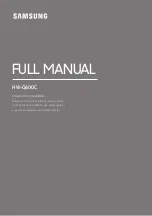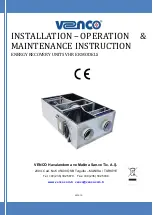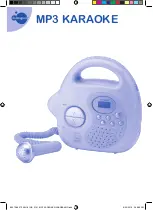
5
ARC RAYS
FIRE & EXPLOSIONS
SPARKS AND HOT METAL
CYLINDERS
FUMES AND GASES
ARC RAYS can burn eyes and skin; NOISE can damage hearing.
ARC RAYS from the welding process produce an intense heat
and strong ultraviolet rays that can burn eyes and skin. Noise
from some processes can damage hearing.
The WELDING operation can potentially cause fire or an
explosion as Sparks and spatter are emitted from thewelding
arc. The flying sparks and hot metal, weld spatter, hot
workpiece and hot equipment havepotential to cause fires
and burns. Accidental contact of the wire or electrode to
grounded metal objects may cause sparks, overheating or fire.
Chipping and grinding can cause flying metal. As welds cool,
they can throw off slag.
Cylinders can explode if damaged. Shielding gas cylinders
contain gas under high pressure. If damaged, a cylinder can
explode. Since gas cylinders are normally part of the welding
process, be sure to treat them carefully
FUMES and GASES can be hazardous to your health and
Welding produces fumes and gases. Breathing these fumes
and gases can be hazardous to your health.
1. Use a Welding Helmet or Welding Face Shield fitted with
proper shade or filter for the application, to protect your face
and eyes when welding or watching someone else weld.
2. Wear approved safety glasses. Side shields recommended.
3. Use protective screens and/or barriers, to protect others from
flash and glare and warn others not to watch the arc.
4. Wear protective clothing made from durable, flame resistant
material (eg: wool and leather) and appropriate foot protection.
5. Use approved ear plugs or ear muffs if the noise level is high.
6. Never wear contact lenses while welding.
1. Protect yourself and others from flying sparks and hot metal.
2. Do not weld where flying sparks can strike flammable material.
3. Remove all flammables within 35ft (10.7m) of the welding arc. If
this is not possible, tightly cover them with an approved
containment method.
4. Be alert that welding sparks and hot materials from welding
can easily go through small cracks and openings to adjacent
areas.
5. Watch for fire, and keep a fire extinguisher nearby.
6. Be aware that welding on a ceiling, floor, bulk-head or partition
can cause a fire on the hidden side.
7. Do not weld on closed containers such as tanks or drums.
8. Connect the work cable to the workpiece as close to the
welding area as practical, to prevent welding current from
traveling long, possibly unknown paths and causing electric
shock and fire hazards.
9. Do not use a welder to thaw frozen pipes.
1. Protect compressed gas cylinders from excessive heat,
mechanical shocks, and arcs.
2. Install and secure cylinders in an upright position by securing
them to a stationary support or equipment cylinder rack to
prevent falling or tipping.
3. Keep cylinders away from any welding or other electrical
circuits.
4. Never allow a welding electrode to touch any cylinder.
5. Use only correct shielding gas cylinders, regulators, hoses, and
fittings designed for the specific application;maintain them and
associated parts in good condition.
6. 6. Turn face away from valve outlet when opening cylinder valve.
7. 7. Keep the protective cap in place over the valve except when
the cylinder is in use or connected for use.
1. Wear an approved face shield, safety goggles. Side
shields recommended.
2. Wear proper body protection to protect skin.
1. Keep your head out of the path of fumes as best you can. Do not
breathe the fumes if it can be avoided.
2. If inside, ventilate the area and/or use exhaust at or as close to
the arc as possible to remove the welding fumes/gases.
3. If ventilation is poor, use an approved air supplied or filtered
respirator.
4. Read the Material Safety Data Sheets (MSDS’s) and the
manufacturer’s instruction for metals, consumables, coatings
and cleaners.
5. Work in confined space only if it is well ventilated, or while
wearing an air supplied or filtered respirator. Shielding gases
used for welding can displace air causing injury or death. Be
sure the breathing air is safe.
6. Do not weld in locations near flammable liquids (eg. degreaser,
paint, aerosol storage or cleaning chemicals), as the heat and
rays of the arc could react with vapours to form highly toxic and
irritating or flammable gases.
7. Do not weld on coated metals, such as galvanized, lead or
cadmium plated steel, unless the coating is removed from the
weld area, the area is well ventilated and if necessary, while
wearing an air supplied or filtered respirator. The coatings and
any metals containing these elements can give off toxic fumes if
welded.
8. Protect yourself and others from flying sparks and hot metal.
9. Do not weld where flying sparks can strike flammable material.
10. Remove all flammables within a 35ft (10.7m) of the welding arc.
If this is not possible, tightly cover them with an approved
containment method.
Содержание 351 SWF
Страница 1: ...TOPGUNWELDING COM AU Manual Guide 351 SWF 505 SWF 3 PHASE MIG WELDER W FEEDER...
Страница 2: ...This page has been intentionally left blank...
Страница 4: ...2...
Страница 18: ...16 Basic Wiring Diagram Power Source...
Страница 26: ...24 Electrical Schematic DIAGRAM...
Страница 30: ...28...
Страница 31: ...29...
Страница 32: ......








































